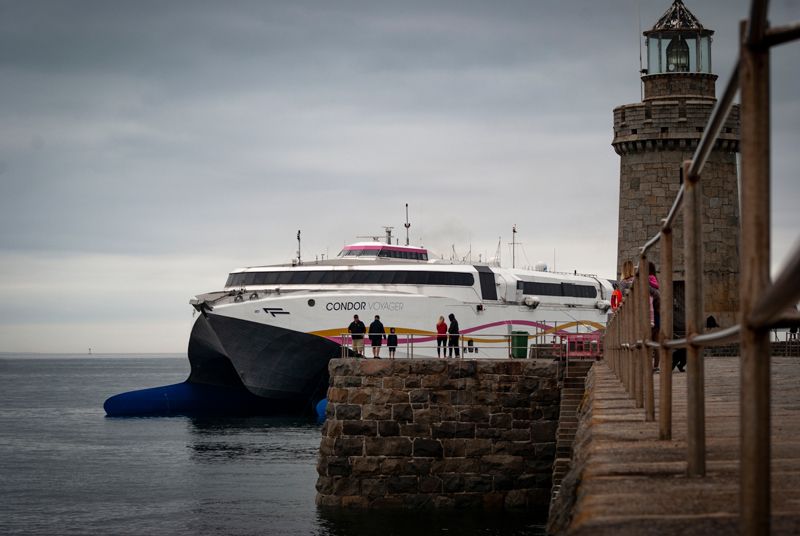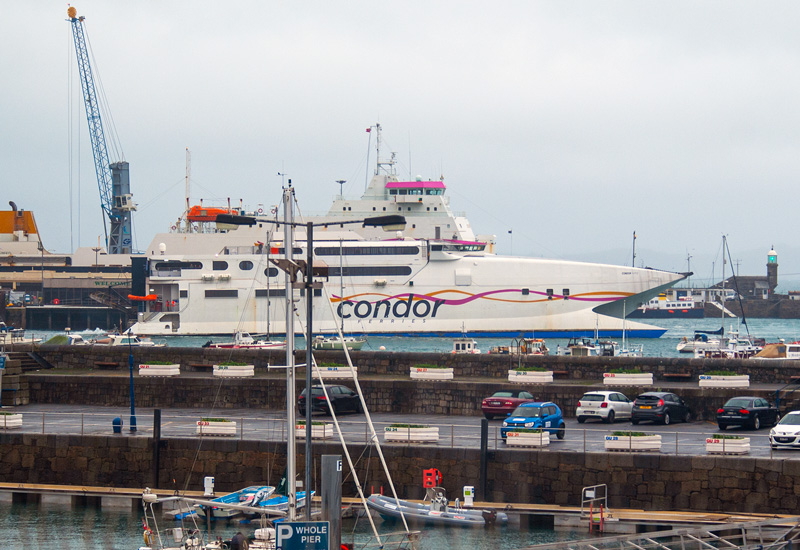

Condor Ferries will make "changes and modifications over time" to its newest vessel, the Voyager, which is now on a longer-term lease covering the 2022 summer season.
The Voyager was first loaned in June this year from Brittany Ferries, Condor's minority shareholder.
At the time, Elwyn Dop, Condor's Operations Director, described the 98m-long high-speed catamaran as "a larger version of Rapide" which Condor would use to operate a number of peak summer services between the UK and France for Brittany Ferries.
The summer lease was intended to provide an opportunity for Condor to evaluate the vessel. Confirming the extension of the original lease - which expired in October - Condor said the company was pleased with the vessel's performance to date and that it has potential for modifications to improve services further.

“Condor Voyager entered service in June of this year and her lease has been extended to cover the 2022 season," said Condor.
“We took the opportunity to introduce the vessel whilst she was available and will make changes and modifications over time. One of the key benefits of using Voyager has been the increase in capacity compared to her predecessor, Rapide.
"Using Voyager and Condor Liberation last summer, with a revised schedule from the UK, has meant we were able to double car and passenger carryings to 400 cars and 1,600 passengers per day to Guernsey and Jersey.
“This has supported the inbound visitor market and also provided travel options for islanders.”
The Voyager has been operating out of St Malo in Brittany, but that will change when Condor moves its French services to Cherbourg in Normandy during January and February 2022.
Cherbourg is one of six ports which could face disruption if the Governments of France, the UK and the Channel Islands cannot resolve an ongoing dispute about fishing rights. But Condor said Cherbourg "is a much larger port than St Malo and less affected by poor weather" and therefore "offers greater certainty" to services.
The Voyager does not have bow thrusters, which apply lateral propulsion to manoeuvre a boat’s bow in a sideways direction. They help counter the forces of wind and tidal current when manoeuvring in close quarters.
The website of manufacturers Incat suggests the benefits of this are the "savings in weight, hull drag and a quieter ride at sea" and that the catamaran "can make a 360 degree turn in its own length".
Comments
Comments on this story express the views of the commentator only, not Bailiwick Publishing. We are unable to guarantee the accuracy of any of those comments.